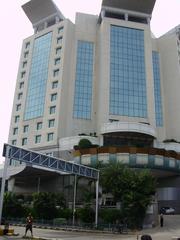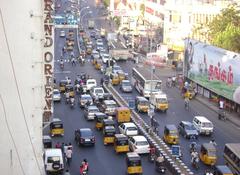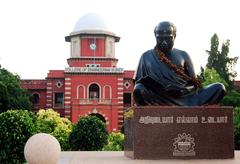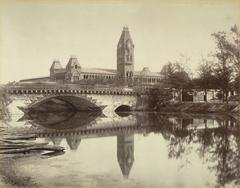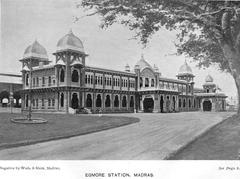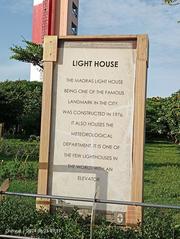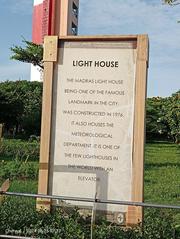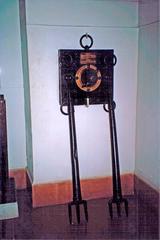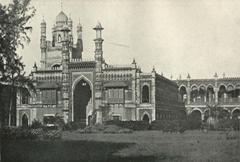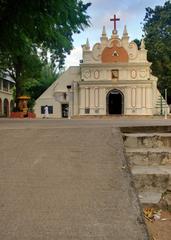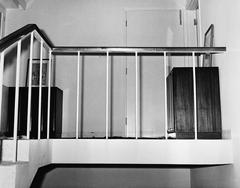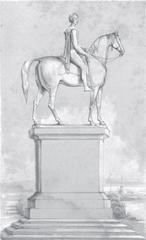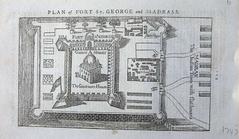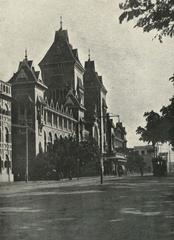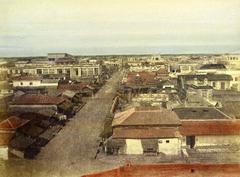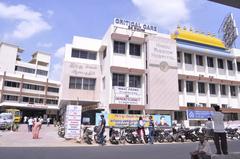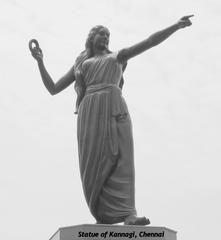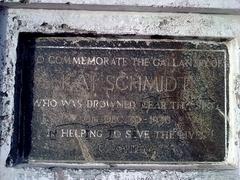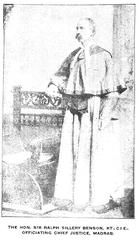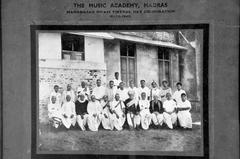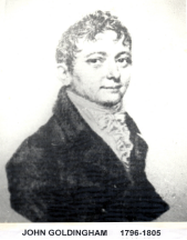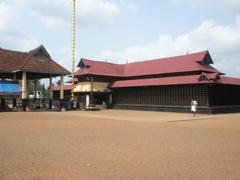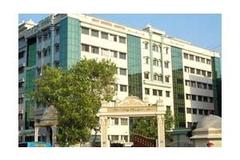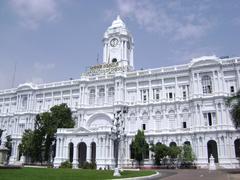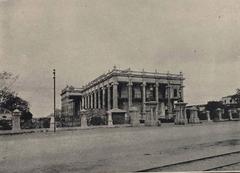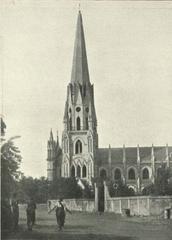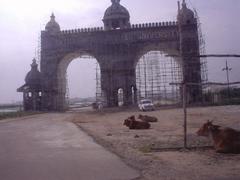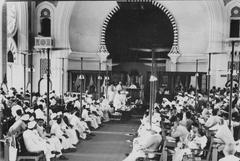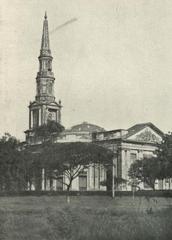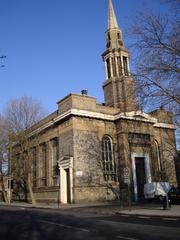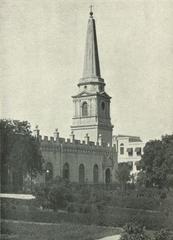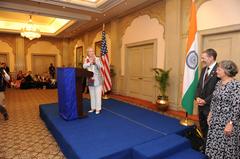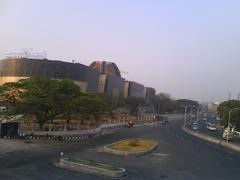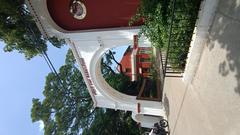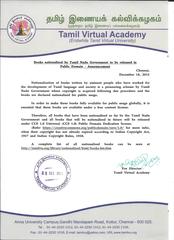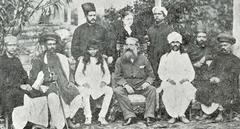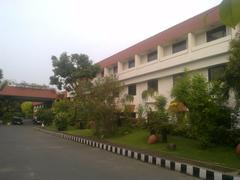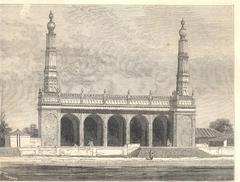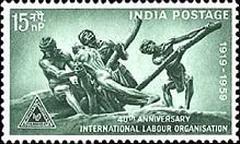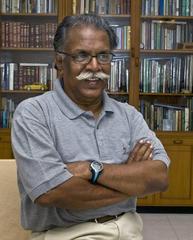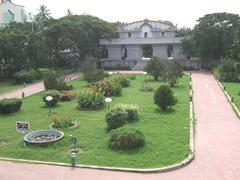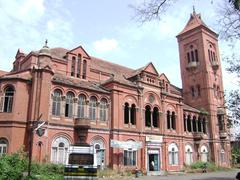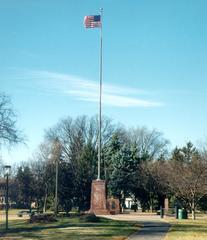Comprehensive Guide to Visiting The Armenian Church, Chennai, India
Date: 25/07/2024
Introduction
The Armenian Church in Chennai, also known as the Church of Virgin Mary, is a historical and cultural gem nestled in the bustling George Town area of Chennai. Built in 1712 and reconstructed in 1772, this church is one of the oldest surviving Christian structures in India, reflecting the rich heritage and contributions of the Armenian community in the region (Wikipedia). The Armenians established themselves in Chennai during the 16th and 17th centuries, largely due to their involvement in the lucrative trade networks between Europe and Asia, especially in textiles and spices (The Hindu). Over the centuries, the church has not only served as a place of worship but also as a center for social, cultural, and community activities, making it a significant landmark in Chennai’s multicultural landscape.
Table of Contents
- Introduction
- History of The Armenian Church, Chennai
- Architectural Significance
- Key Figures and Contributions
- Cultural and Historical Milestones
- Decline of the Armenian Community
- Visitor Information
- Preservation and Maintenance
- Significance in Chennai’s Multicultural Landscape
- FAQ
- Conclusion
History of The Armenian Church, Chennai
Early Armenian Presence in Chennai
The Armenian community has a long and storied history in Chennai, dating back to the early 16th century. Fleeing persecution by the Ottoman Turks, Armenian merchants found refuge in Madras (now Chennai) and began trading in spices, silk, and gems (The Hindu). The oldest Armenian tombstone in Chennai dates back to 1663, indicating their early settlement in the region.
Establishment of the Armenian Church
The Armenian Church was initially constructed in 1712 and later reconstructed in 1772 (Wikipedia). The church was built on land granted by the British East India Company, which had a favorable relationship with the Armenian merchants. The church’s construction was funded by the Armenian Apostolic Church and maintained by the Armenian Church Committee of Calcutta (Chennai Tourism).
Architectural Significance
The Armenian Church is renowned for its unique architectural style, which blends Indo-Saracenic and Armenian elements. One of the most striking features of the church is its six-bell belfry, which is a rare and significant aspect of its design (Lonely Planet). The bells were cast in 1837 and are still functional, adding to the church’s historical charm.
Key Figures and Contributions
Several key figures have played a significant role in the history of the Armenian Church. Coja Petrus Uscan, an Armenian merchant, was notably generous with his wealth and contributed significantly to the church’s construction. Aga Shawmier, who succeeded Uscan, also played a crucial role in the church’s development (Wikipedia).
Cultural and Historical Milestones
The Armenian Church has been a center of cultural and historical significance for the Armenian community in Chennai. It was from this church that the first Armenian journal, Azdarar, was published in 1747 (Destination Infinity). Additionally, the draft constitution for an independent Armenia was initially put together here during the 1780s, although it was only realized in the late 1990s with the downfall of the Soviet Union.
Decline of the Armenian Community
By the mid-20th century, many Armenians began moving to other countries, leading to a significant decline in the community’s population in Chennai. Today, only a few Armenian families remain in the city, but they continue to gather at the Armenian Church to celebrate their heritage (The Hindu).
Visitor Information
Visiting Hours and Tickets
The Armenian Church is open to visitors from 9:00 AM to 2:30 PM daily, offering a serene and peaceful environment amidst the bustling city of Chennai. There is no entry fee, making it accessible to all visitors (Destination Infinity).
Travel Tips
- Best Time to Visit: Early mornings or late afternoons to avoid the midday heat.
- Nearby Attractions: Fort St. George, St. Mary’s Church, and George Town area.
- Photography: The church’s courtyard and six-bell belfry are excellent spots for photography.
Preservation and Maintenance
The Armenian Church is currently maintained by the Armenian Church Committee of Calcutta and funded by the Armenian Apostolic Church. Over the years, various caretakers have ensured the church’s upkeep, including Michael Stephen until 2004, Trevor Alexander from 2010 to 2014, and Jude Johnson as of 2019 (Wikipedia).
Significance in Chennai’s Multicultural Landscape
The Armenian Church stands as a testament to the multicultural history of Chennai. It highlights the significant contributions of the Armenian community to the city’s trade, culture, and heritage. The church’s presence on Armenian Street in George Town further underscores the lasting impact of the Armenian merchants who once thrived in the region (Chennai Tourism).
FAQ
Q: What are the visiting hours of the Armenian Church in Chennai?
- A: The church is open daily from 9:00 AM to 2:30 PM.
Q: Is there an entry fee to visit the Armenian Church?
- A: No, there is no entry fee to visit the church.
Q: What are some nearby attractions?
- A: Nearby attractions include Fort St. George, St. Mary’s Church, and the George Town area.
Q: Are guided tours available?
- A: Currently, there are no official guided tours, but visitors can explore the church and its surroundings at their own pace.
Conclusion
The Armenian Church in Chennai is not just a place of worship but a historical monument that encapsulates the rich and diverse history of the Armenian community in the city. Its architectural beauty, cultural significance, and historical milestones make it a must-visit for anyone interested in exploring Chennai’s multicultural heritage. Don’t forget to check out other historical sites in the area and share your experience on social media for more updates on Chennai’s rich history (Chennai Tourism, Destination Infinity).
